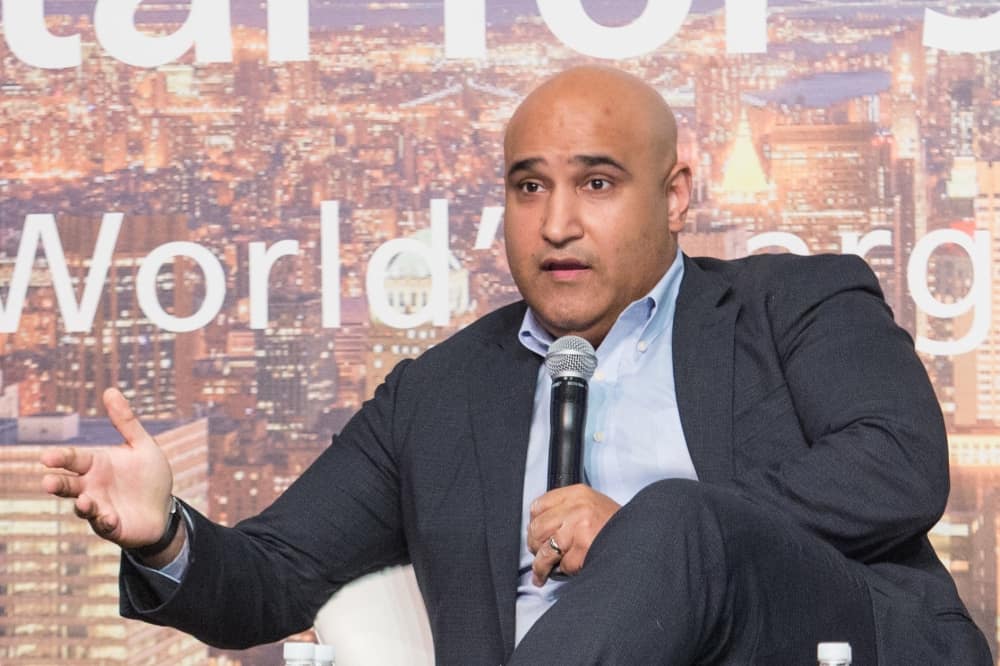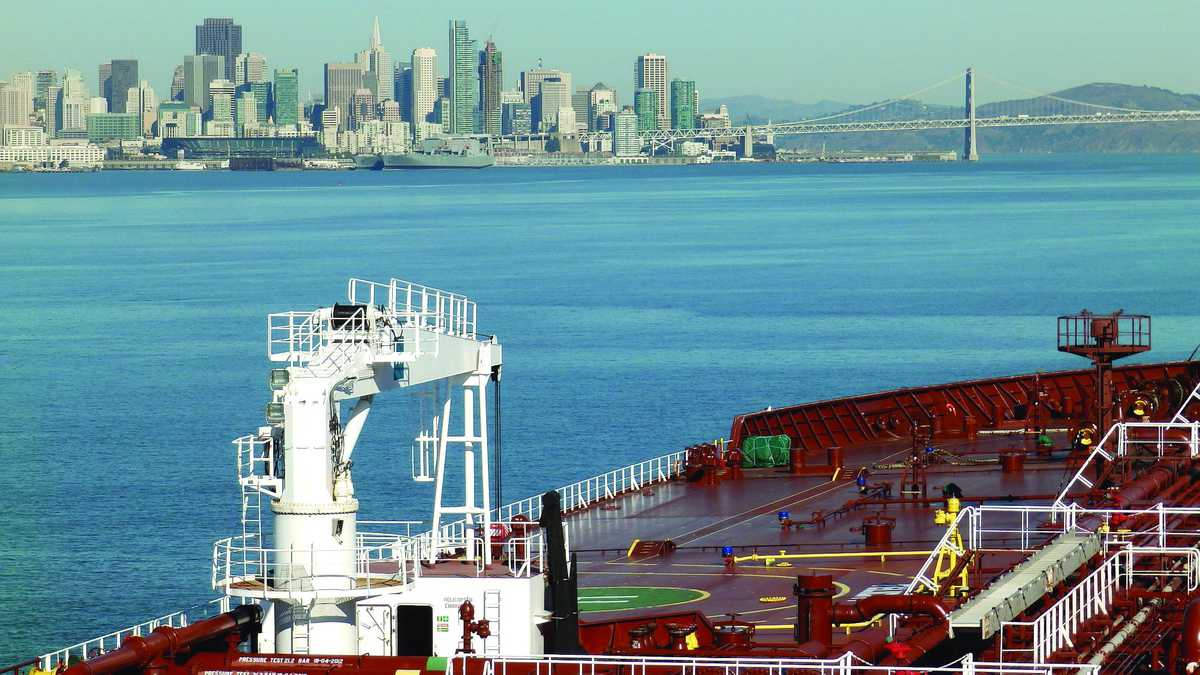Never before has oil production been slashed this much this quickly, but it still isn’t enough to offset coronavirus demand destruction.
OPEC and cooperating non-OPEC countries such as Russia (a coalition known as OPEC+) will cut output by 9.7 million barrels/day (b/d) in May-June, 7.7 million b/d in July-December and 5.8 million b/d in January-April 2021.
Coronavirus demand destruction is estimated to exceed 20 million b/d. Continued excess production will pull more tankers into use as floating storage, reducing the number of vessels bidding for spot voyage deals and prolonging historically high rates.
“In any other time, an output cut of this magnitude would be the death knell for the tanker industry,” said Evercore ISI analyst Jon Chappell. “But with the reductions failing to match the estimated demand destruction, inventories are still likely to build materially … pressuring near-term oil prices and incenting floating storage.
“Tanker stocks are the only place for energy capital before the demand/supply imbalance inflects,” maintained Chappell.
In early trading on Monday, investors in listed owners of very large crude carriers (VLCCs; tankers that carry 2 million barrels of crude oil) appeared to agree; tanker stocks rose as the broader market fell sharply.
By the closing bell, tanker stocks had retreated. Shares of Frontline (NYSE: FRO) and DHT (NYSE: DHT) closed flat (up less than 1%). Shares of Euronav (NYSE: EURN) closed down 3.6% and shares of International Seaways (NYSE: INSW) fell 5%.
Saudi pricing discounts
OPEC+ production cuts were followed on Monday by Saudi Arabia’s pricing of its May export cargoes, including reductions of $2.95-$5.50 per barrel versus April prices for buyers in the Asia-Pacific region, according to Argus Media.

Jefferies analyst Randy Giveans told FreightWaves, “The massive pricing cuts that [Saudi oil company] Saudi Aramco is offering its Asian buyers in May shows that Saudi Arabia remains focused on market share and will be exporting substantial amounts of crude even during the deepest time of the [production] cuts.
“As a result, the chartering spree of [Saudi Aramco transport arm] Bahri is expected to continue, and the forward curves for tankers rates in May, June, and July are all rising.
“It makes sense that Saudi Arabia did not cut the prices for the U.S. and Europe in order to stay on the good side of the Americans and Russians,” Giveans added. “The focus is on selling additional barrels into the region that is actually ramping back up: Asia.”
More floating storage
Giveans believes OPEC+ cuts “may slow the storage build in May and June, but the [crude oil] forward curve contango will likely widen in the coming weeks, leading to continued floating-storage demand.” Contango refers to a situation in which the futures price of a commodity is higher than the spot price, implying a belief that prices will rise.
According to Frode Mørkedal, managing director of research at Clarksons Platou Securities, “It seems likely that oversupply in the near term is inevitable, causing a continued wave of oil stockpiling. On-land storage facilities are likely to reach limits within the second quarter, underpinning the need for floating storage.
“We expect this will maintain a higher level of inquiry in the tanker market, supporting tanker rates at healthy levels. However, a drop in crude oil production of 9.7 million b/d is extremely significant given that the [global] crude-oil tanker trade is 40 million b/d.
“Without the contango and the need for floating storage, this type of cut would have an overwhelmingly negative effect on tanker demand and charter rates. Accordingly, we see near-term support for tankers but major questions as we approach the second half of 2020, and 2021,” warned Mørkedal.
How long will rate strength last?
Jefferies estimated that VLCC rates fell 35% last week but still averaged an extremely high $135,302 per day. Deutsche Bank transportation analyst Amit Mehrotra estimated that VLCC rates averaged $144,000 per day last week, “six times all-in cash break-even levels.”

VLCC rates have not been this strong for this long since the historic China-fueled shipping boom in the mid-2000s.
Spot rates at current levels would normally cause crude-tanker stocks prices to surge — but these are not normal times. Tankers stocks are still down by double-digits year to date.
Crude-tanker equities face two big headwinds: broader macro downward momentum due to coronavirus; and concerns that tanker demand will crash when bloated inventories are drawn down.
“The OPEC+ move will lead to a faster unwind of inventories and this process will be incredibly painful for the tanker markets and equities,” conceded Chappell, who advised investors to “be nimble because you don’t want to be the last one left holding the bag.”
Mehrotra believes the attention on the future rate downturn has been excessive. “With respect to tanker stocks, we believe too much focus is being given to what the outlook is six months from now, and less focus on cash-flow generation here and now,” he said.
“This may seem counterintuitive because the market is, of course, a discounting mechanism, but the typical playbook doesn’t apply, in our view, given the level of cash flows being generated in the first half and what those cash flows imply for net asset value [NAV],” said Mehrotra. “We believe pro forma for first- and second-quarter cash flows, NAVs will be significantly higher, which should drive significant uplift in shares.”
The downside argument
On the other end of the investing-timing spectrum is Joakim Hannisdahl, head of research at Cleaves Securities, who was ranked the world’s top shipping analyst by Bloomberg in 2019.
Hannisdahl had previously been very optimistic on tanker equities, but on Monday he switched his rating for the entire group from “buy” to “hold.”

He predicted that floating storage would lead to “mind-boggling” VLCC rates in the very near term, but that floating-storage economics would deteriorate in the third quarter and that tanker spot rates would plummet to an average of $15,000 per day in the second half of this year.
Hannisdahl believes global inventories will begin the destocking process next year, which will have a “profoundly negative impact on demand for oil tankers” and will undermine rates into the 2021-22 winter season.
“We do see the potential for an oil tanker super-cycle from 2023, but believe it is too early to discount this scenario into today’s share price,” he said. “In our experience, investors tend to look approximately 1.5 years into the future when investing in shipping.”
Giveans told FreightWaves he “wholeheartedly disagrees” with the new Cleaves forecast. “It’s hard for me to find a scenario where VLCC rates will average $15,000 per day in the second half of 2020; that’s below my bear case, much less my base case. Due to the likely demand rebound and minimal fleet growth, I’ll take any bet you want that rates will not fall that low for a six-month average, and I’d even be surprised if rates fall below $15,000 per day for a single day this year.” Click for more FreightWaves/American Shipper articles by Greg Miller











Capstone logistics lumper service
MarketWatch article says they’re building the keystone Pipeline